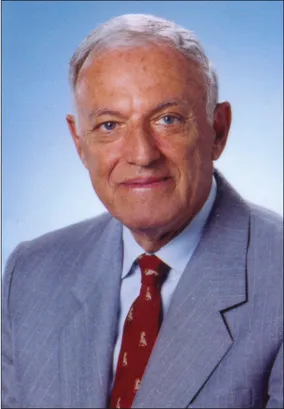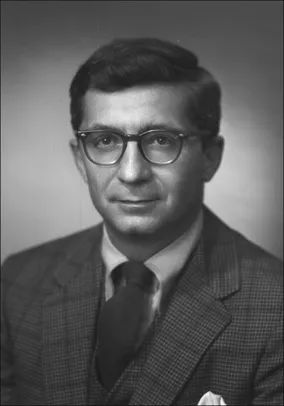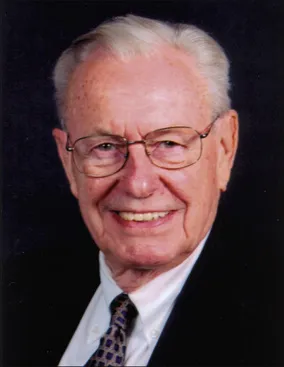
eBook - ePub
Total Burn Care E-Book
David N. Herndon
This is a test
Condividi libro
- 812 pagine
- English
- ePUB (disponibile sull'app)
- Disponibile su iOS e Android
eBook - ePub
Total Burn Care E-Book
David N. Herndon
Dettagli del libro
Anteprima del libro
Indice dei contenuti
Citazioni
Informazioni sul libro
Recent advances in research have resulted in tremendous changes in burn management. Stay fully up to date with the new edition of Total Burn Care, by leading authority Dr. David N. Herndon. Detailed procedural guidelines walk you through every step of the process, from resuscitation through reconstruction and rehabilitation. Everyone on the burn care team, including general and plastic surgeons, intensivists, anesthestists, and nurses, will benefit from this integrated, multidisciplinary guide to safe and effective burn management.
- Discusses infection control, early burn coverage, occupational physical exercise, respiratory therapy, and ventilator management.
- Summarizes key points at the beginning of each chapter for quick reference.
- Uses an integrated, team approach to help you meet the clinical, physical, psychological, and social needs of every patient.
- Offers expert guidance on early reconstructive surgery and rehabilitation, with new content on improved surgical techniques.
- Covers special populations such as elderly and pediatric patients, and includes a new chapter on burns in pregnancy.
Domande frequenti
Come faccio ad annullare l'abbonamento?
È semplicissimo: basta accedere alla sezione Account nelle Impostazioni e cliccare su "Annulla abbonamento". Dopo la cancellazione, l'abbonamento rimarrà attivo per il periodo rimanente già pagato. Per maggiori informazioni, clicca qui
È possibile scaricare libri? Se sì, come?
Al momento è possibile scaricare tramite l'app tutti i nostri libri ePub mobile-friendly. Anche la maggior parte dei nostri PDF è scaricabile e stiamo lavorando per rendere disponibile quanto prima il download di tutti gli altri file. Per maggiori informazioni, clicca qui
Che differenza c'è tra i piani?
Entrambi i piani ti danno accesso illimitato alla libreria e a tutte le funzionalità di Perlego. Le uniche differenze sono il prezzo e il periodo di abbonamento: con il piano annuale risparmierai circa il 30% rispetto a 12 rate con quello mensile.
Cos'è Perlego?
Perlego è un servizio di abbonamento a testi accademici, che ti permette di accedere a un'intera libreria online a un prezzo inferiore rispetto a quello che pagheresti per acquistare un singolo libro al mese. Con oltre 1 milione di testi suddivisi in più di 1.000 categorie, troverai sicuramente ciò che fa per te! Per maggiori informazioni, clicca qui.
Perlego supporta la sintesi vocale?
Cerca l'icona Sintesi vocale nel prossimo libro che leggerai per verificare se è possibile riprodurre l'audio. Questo strumento permette di leggere il testo a voce alta, evidenziandolo man mano che la lettura procede. Puoi aumentare o diminuire la velocità della sintesi vocale, oppure sospendere la riproduzione. Per maggiori informazioni, clicca qui.
Total Burn Care E-Book è disponibile online in formato PDF/ePub?
Sì, puoi accedere a Total Burn Care E-Book di David N. Herndon in formato PDF e/o ePub, così come ad altri libri molto apprezzati nelle sezioni relative a Medicine e Plastic & Cosmetic Medicine. Scopri oltre 1 milione di libri disponibili nel nostro catalogo.
Informazioni
1
A Brief History of Acute Burn Care Management
Ludwik K. Branski, David N. Herndon, Robert E. Barrow
The recognition of burns and their treatment is evident in cave paintings that are more than 3500 years old. Documentation in the Egyptian Smith papyrus of 1500 BC advocated the use of a salve of resin and honey for treating burns.1 In 600 BC, the Chinese used tinctures and extracts from tea leaves. Nearly 200 years later, Hippocrates described the use of rendered pig fat and resin-impregnated bulky dressings, which was alternated with warm vinegar soaks augmented with tanning solutions made from oak bark. Celsus, in the 1st century AD, mentioned the use of wine and myrrh as a lotion for burns, most probably for their bacteriostatic properties.1 Vinegar and exposure of the open wound to air was used by Galen (130–210 AD) as a means of treating burns, while the Arabian physician Rhases recommended cold water for alleviating the pain associated with burns. Ambroise Paré (1510–1590 AD), who effectively treated burns with onions, was probably the first to describe a procedure for early burn wound excision. In 1607, Guilhelmus Fabricius Hildanus, a German surgeon, published De Combustionibus, in which he discussed the pathophysiology of burns and made unique contributions to the treatment of contractures. In 1797, Edward Kentish published an essay describing pressure dressings as a means to relieve burn pain and blisters. Around this same time, Marjolin identified squamous cell carcinomas that developed in chronic open burn wounds. In the early 19th century, Guillaume Dupuytren (Fig. 1.1) reviewed the care of 50 burn patients treated with occlusive dressings and developed a classification of burn depth that remains in use today.2 He was perhaps the first to recognize gastric and duodenal ulceration as a complication of severe burns, a problem that was discussed in more detail by Curling of London in 1842.3 In 1843, the first hospital for the treatment of large burns used a cottage on the grounds of the Edinburgh Royal Infirmary.

Fig. 1.1 Guillaume Dupuytren.
Truman G. Blocker Jr. (Fig. 1.2) may have been the first to demonstrate the value of the multidisciplinary team approach to disaster burns when, on April 16, 1947, two freighters loaded with ammonium nitrate fertilizer exploded at a dock in Texas City, killing 560 people and injuring more than 3000. At that time, Blocker mobilized the University of Texas Medical Branch in Galveston, Texas, to treat the arriving truckloads of casualties. This “Texas City Disaster” is still known as the deadliest industrial accident in American history. Over the next 9 years, Truman and Virginia Blocker followed more than 800 of these burn patients and published a number of papers and government reports on their findings.4–6 The Blockers became renowned for their work in advancing burn care, with both receiving the Harvey Allen Distinguished Service Award from the American Burn Association (ABA). Truman Blocker Jr. was also recognized for his pioneering research in treating burns “by cleansing, exposing the burn wounds to air, and feeding them as much as they could tolerate.”7 In 1962, his dedication to treating burned children convinced the Shriners of North America to build their first Burn Institute for Children in Galveston, Texas.7

Fig. 1.2 Truman G. Blocker Jr.
Between 1942 and 1952, shock, sepsis, and multiorgan failure caused a 50% mortality rate in children with burns covering 50% of their total body surface area (TBSA).8 Recently burn care in children has improved survival such that a burn covering more than 95% TBSA can be survived in more than 50% of cases.9 In the 1970s, Andrew M. Munster (Fig. 1.3) became interested in measuring quality of life after excisional surgery and other improvements led to a dramatic decrease in mortality. First published in 1982, his Burn Specific Health Scale became the foundation for most modern studies in burns outcome.10 The scale has since been updated and extended to children.11

Fig. 1.3 Andrew M. Munster.
Further improvements in burn care presented in this brief historical review include excision and coverage of the burn wound, control of infection, fluid resuscitation, nutritional support, treatment of major inhalation injuries, and support of the hypermetabolic response.
Early Excision
In the early 1940s, it was recognized that one of the most effective therapies for reducing mortality from a major thermal injury was the removal of burn eschar and immediate wound closure.12 This approach had previously not been practical in large burns owing to the associated high rate of infection and blood loss. Between 1954 and 1959, Douglas Jackson and colleagues at the Birmingham Accident Hospital advanced this technique in a series of pilot and controlled trials starting with immediate fascial excision and grafting of small burn areas and eventually covering up to 65% of the TBSA with autograft and homograft skin.13 In this breakthrough publication, Jackson concluded that “with adequate safeguards, excision and grafting of 20% to 30% body surface area can be carried out on the day of injury without increased risk to the patient.” This technique, however, was far from being accepted by the majority of burn surgeons, and delayed serial excision remained the prevalent approach to large burns. It was Zora Janzekovic (Fig. 1.4), working alone in Yugoslavia in the 1960s, who developed the concept of removing deep second-degree burns by tangential excision with a simple uncalibrated knife. She treated 2615 patients with deep second-degree burns by tangential excision of eschar between the third and fifth days after burn and covered the excised wound with skin autograft.14 Using this technique, burned patients were able to return to work within 2 weeks or so from the time of injury. For her achievements, in 1974, she received the ABA Everett Idris Evans Memorial Medal and, in 2011, the ABA lifetime achievement award.

Fig. 1.4 Zora Janzekovic.
In the early 1970s, William Monafo (Fig. 1.5) was one of the first Americans to advocate the use of tangential excision and grafting of larger burns.15 John Burke (Fig. 1.6), while at Massachusetts General Hospital in Boston, reported unprecedented survival in children with burns of more than 80% TBSA.16 His use of a combination of tangential excision for the smaller burns (Janzekovic's technique) and excision to the level of fascia for the larger burns resulted in a decrease in both hospital time and mortality. Lauren Engrav et al.,17 in a randomized prospective study, compared tangential excision to nonoperative treatment of burns. This study showed that, compared to nonoperative treatment, early excision and grafting of deep second-degree burns reduced hospitalization time and hypertrophic scarring. In 1988, Ron G. Tompkins et al.,18 in a statistical review of the Boston Shriners Hospital patient population from 1968 to 1986, reported a dramatic decrease in mortality in severely burned children that he attributed mainly to the advent of early excision and grafting of massive burns in use since the 1970s. In a randomized prospective trial of 85 patients with third-degree burns covering 30% or more of their TBSA, Herndon et al.19 reported a decrease in mortality in those treated with early excision of the entire wound compared to conservative treatment. Other studies have reported that prompt excision of the burn eschar improves long-term outcome and cosmesis, thereby reducing the amount of reconstructive procedures required.

Fig. 1.5 William Monafo.

Fig. 1.6 John Burke.
Skin Grafting
Progress in skin grafting techniques has paralleled the developments in wound excision. In 1869, J. P. Reverdin, a Swiss medical st...